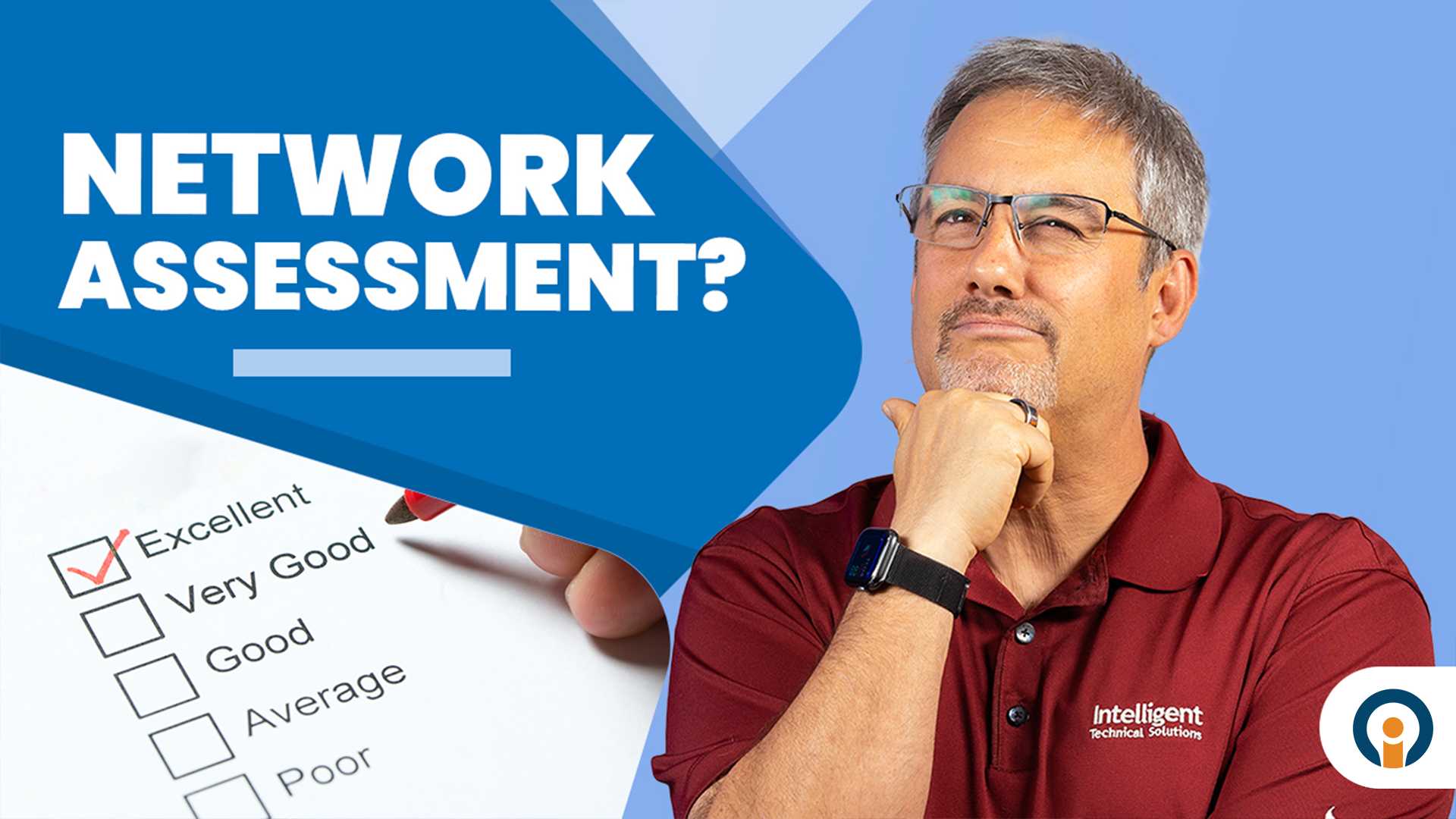What is a Network Assessment? Definition, Scope, and Why You Need It
Some companies dismiss network assessments as a way for managed IT providers to make a sales pitch. However, there’s more to network assessments than being a mere sales tool. Read this article to learn more about why your organization needs to undergo one.
Have you ever been approached by an IT provider for a network assessment but don't know what it means for your business?
Many enterprises don't think much about their current infrastructure until, of course, a problem arises. Unfortunately, the problem is often already severe when they're uncovered. You may have been running into some performance bottlenecks for a while or have just found significant security gaps in your network.
You then scramble to find a solution yourself or get back to your managed service provider for help.
According to an EY Global Information Security Survey (GISS), 87% of organizations don't have the sufficient budget to shore up capabilities. The majority of the organizations surveyed don't even have "a clear picture of what and where their most critical information and assets are, nor have adequate safeguards to protect these assets."
This is precisely why a network assessment is critical for organizations. Most organizations often lack proper network documentation that should give them a better picture of where they stand with their infrastructure and how to optimize their technologies to better align with business goals.
They only begin to realize its importance when they feel the need for it, usually at a time of expansion or crisis.
At Intelligent Technical Solution, we require clients to undergo a network assessment to help them analyze their requirements and identify opportunities for growth. This is what we've been doing for the past decades as a managed service provider before we onboard clients.
In this article, we'll discuss what comprises a network assessment and its benefits for your company. But first, let's take a look at the definition of the network assessment.
What Is a Network Assessment?

A network assessment is a type of audit that involves using a process or script to scan a network to uncover any risks or anomalies. It collects information on your network and endpoints to determine if anything is out of compliance or out of the managed service provider's (MSP) standards.
Another purpose of a network assessment is to find out what's going on below the surface, especially when the client is transferring to ITS from another provider.
"Let's say that it's a construction company that I'm talking with. Just like when you get a new client, you're going to want to see blueprints. You're going to want to go to the job site. You're going to want to do a walkthrough. You'd want to talk to the general contractor and the builder to see what's going on before you give a price," said Adam Kerrigan, a Partner Development Representative at ITS.
"We need to do the same thing. I make it relatable to whatever their industry is so that they understand that it's not like, 'I'm just getting a price, right?' That's how I explain it upfront," he added.

The process for a network assessment is fairly simple: an MSP like ITS comes into your office and runs a piece of code that will scan your network. The code looks into how your devices are managed and searches for vulnerabilities in your system.
The assessment will not result in any downtime in your workstation or network. ITS will then compile the results in a bound book that will give customers a technical analysis of their network.
Critical Components of a Network Assessment
The network assessment consists of a technical analysis that is, in turn, composed of hundreds of metrics. That's why the output for the evaluation is often 300-page thick. Listed below are just a few of the key items that are included in the assessment report:
Risk Score
The subject of the assessment is assigned a risk score based on the overall security of their network. It is given by taking stock of a company's entire IT infrastructure.
Asset Summaries
This is documentation of all equipment and devices that are connected to the network. It includes details about their operating system, applications, how long they've been running, and whether they have security patches installed.
Vulnerability Scan
Threats can come from anywhere. ITS performs an external network vulnerability scan that looks for vulnerabilities outside a firewall. It looks for malicious software installed on workstations, insecure ports that are open on firewalls, and more.
User Access Security
This part of the assessment tells analysts how many users are in a network and when they last logged in, and if some accounts are unused. It also tells them if there are any rogue users or accounts with weak passwords.
Domain Name System (DNS) Security
The network assessment looks at the risk profile of the domain name services; it aims to find out if rogue servers are communicating with the network and if there are any DNS leaks, etc.
Why Companies Need a Network Assessment?

According to Kerrigan, network assessments are essential because they provide business owners peace of mind. "I think from a business owner's perspective, a network assessment provides clarity. It provides a view of reality when it comes to technology. That's one less thing that you need to worry about as a business owner," he said.
Kerrigan acts as a sort of translator for companies seeking to understand their network assessment. It's his job to get the conversation going between ITS and organizations regarding the business implications of the findings in the report.
"The other part of what we're looking for in a network assessment, it's not technical in nature. Understanding the business implications of their technology problems is done by talking with the people. I want to talk to them, and I want to find out about their experience: what's working and what's not working," Kerrigan explained.
"I want to find out when's the last time your server went down and what it meant. How did you work? So how long did it take you to get back up and running? Were clients upset? Did you lose business because of that? Did you have to pay your people overtime when the server came back on?
"At the end of the day, what makes the real difference is knowing when somebody's job is affected. The technical side is not going to uncover that," he added. Kerrigan goes on to say that this process is what differentiates ITS from its competitors. ITS makes it a point to explain the connection between a technical issue and its business impact.
How ITS Can Help with Your Network Assessment?
A network assessment allows organizations like yours to identify weaknesses in their existing IT infrastructure, so you can manage them and plan for growth. It tells you whether your network is in good shape or if there are irregularities in your IT environment that you need to work on.
At ITS, a network assessment is the first step that our clients need to secure and protect their business infrastructure. Schedule a free network assessment with ITS today to gain a better perspective of your company's technology landscape.



